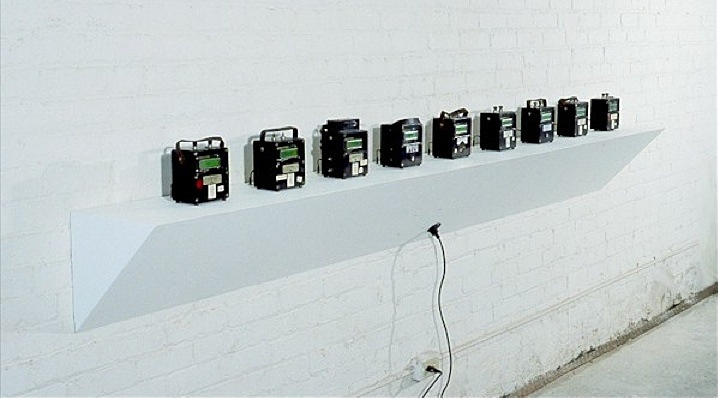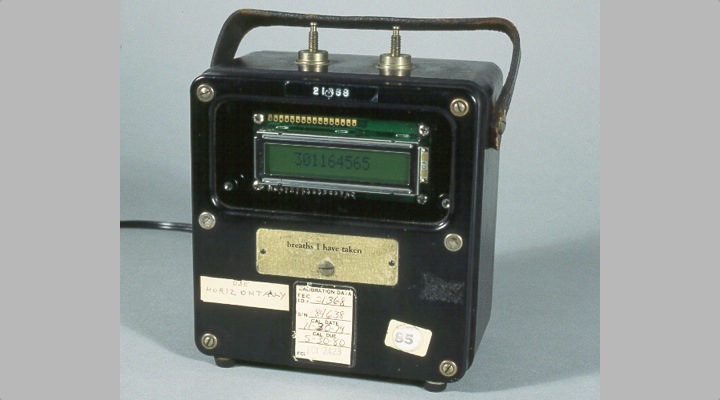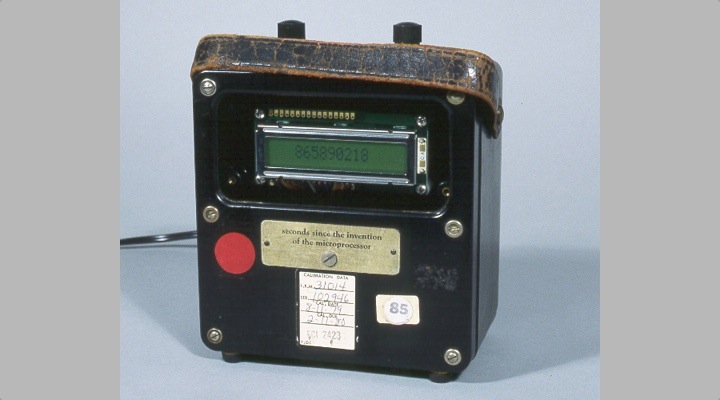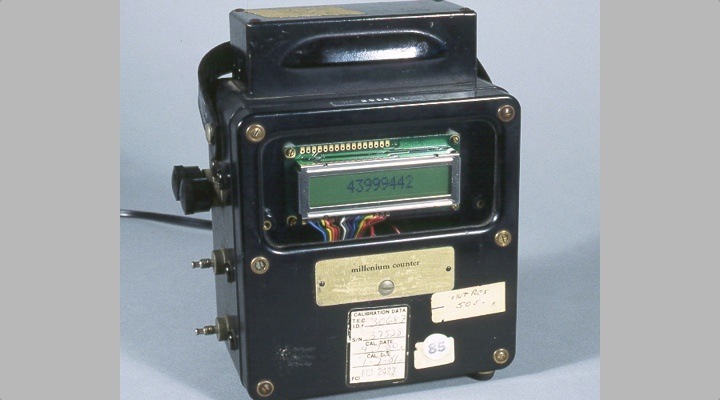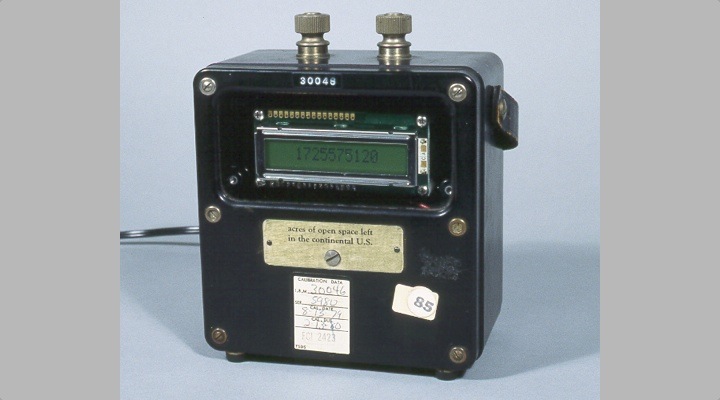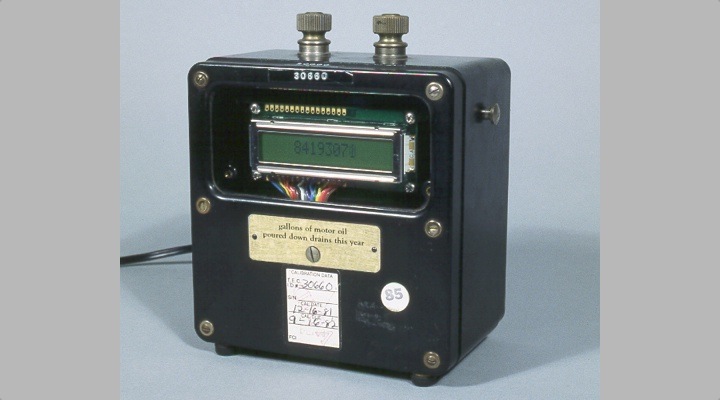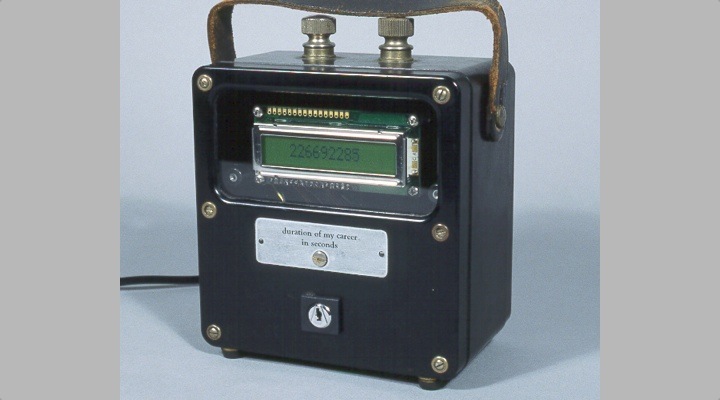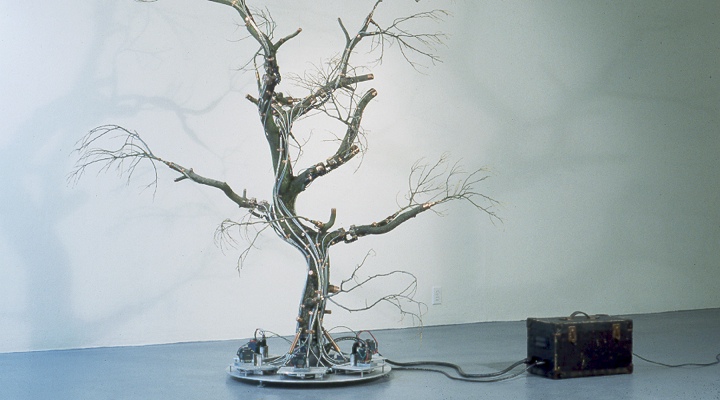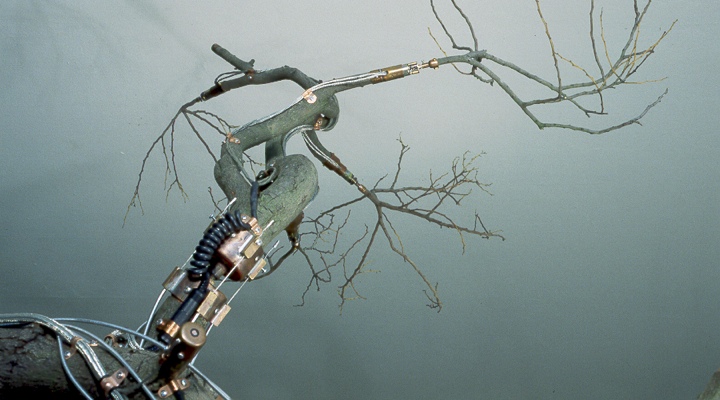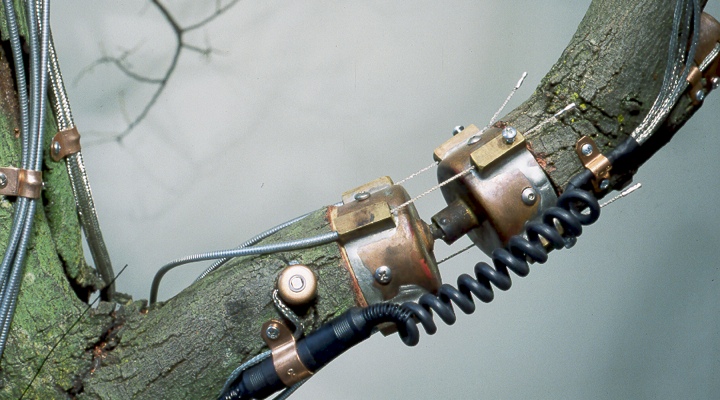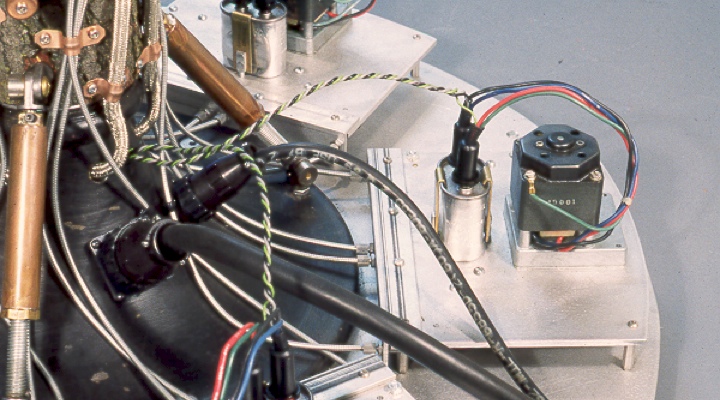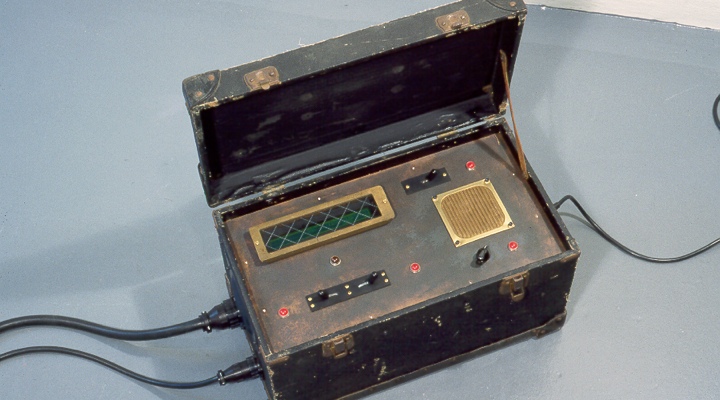I worked as a professional artist between 1990 and 2005. My area of interest was conceptual art, and electronic, interactive and robotic sculpture. Here are just a few highlights from my portfolio. Hopefully I’ll get around to adding more or the works here, at some point.
Audio Time Capsule (2003)

Audio Time Capsules are based on vintage telephones. This technological platform provides a uniquely useful user interface for an audio time capsule, allowing the system’s owner to record a personal message and send it far into the future. This machine is a collaboration between myself and its owner. Upon its purchase, I help its owner record a short digital message, embed it into the audio archive system and then program the clock subsystem with the desired capsule opening date. This can be up to 100 years away.
Once set, the “message waiting” light will blink and the handset will tell listeners when the capsule will open, using digital speech. At the appointed time and date, the phone will ring. Whoever answers will hear the message from the past. If no one answers, the system will call back every hour. Once the message is played, the capsule remains open. From that point forward, anyone who picks up the handset will hear the message.
This system can be used to record secrets, to send advice to future generations, to record wisdom for posterity or to preserve family history. It could also be used for shorter-term special events such as an anniversary or graduation. This piece is the simplest in a series of time capsules. A more advanced version is also available which uses a dial for user input, allowing its owner to change both recordings and opening dates at will.
Fare (1993)

Coin switch, dollar switch, speech electronics;
13x13x10″; 15lbs.
Status: collection of Patricia Correia
Fare is a beat-up metal box with large bolts all over it, closed with a big padlock. Mounted on the face of the piece are quarter acceptor and a dollar bill acceptor plates. If a quarter is inserted, it is dropped onto the floor through a chute in the bottom of the device and the piece says “Fuck you!” If a dollar is inserted, the piece keeps it and says “Thank you!” Fare is wall mounted using keyholes, and requires a hardwood floor or other hard surface for the quarter to land on. Also requires 120v power.
Life Event Timer (1995)
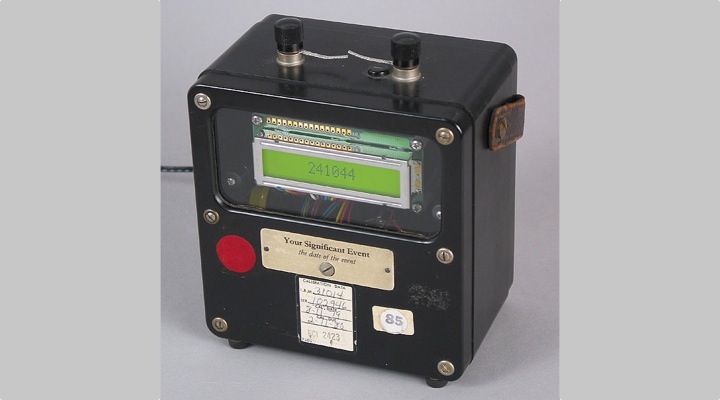
Life Event Timers are very long-lived digital timers which count upwards in seconds from an important moment. They will theoretically count for one hundred years. They are used to commemorate significant personal events by marking them in time.
A typical Life Event Timer is a small mechanism similar to the one pictured here, based on a vintage found object (in this case an antique voltmeter) with a numerical display, a metallic conductive ribbon connecting two electrodes, and a custom brass plaque. Inside is a computer, a clock and a very large battery.
When you receive your Life Event Timer it will have been customized by me to suit the event you wish to commemmorate. I will engrave the plaque with the name and date of your event. If this event is in the future, the count will be frozen at zero. When the moment arrives, you will cut the ribbon and the count will begin.
If the moment you wish to commemorate has already passed, when you receive your Timer the ribbon will be cut and the count will be in progress, adjusted to refer correctly to the intended starting moment. An additional available service is the freezing of a count. This is useful in situations where the event being commemorated was of a finite duration. In this case the Timer can be frozen at the desired moment as a fixed, permanent commemoration.
Portrait Diary (1998)
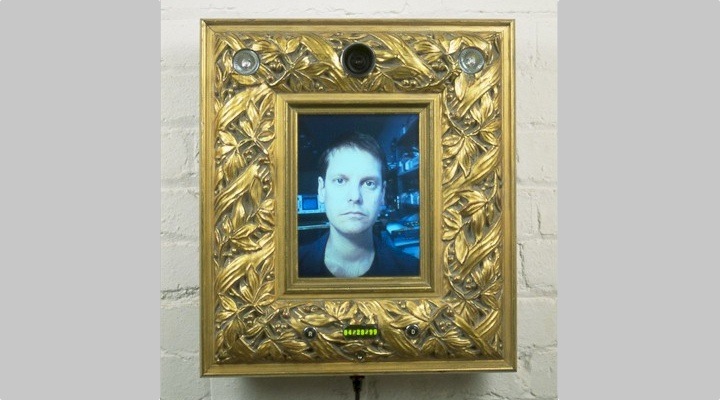
Portrait Diaries are time-stamped electronic image archives: life documentation tools. Designed to be used daily, they gather and preserve quotidian images from your life. They are meant to recall an old hall mirror in both form and function. If hung near the front door they will remind you to photograph yourself often. Over time you will collect a fascinating and moving archive of images.
Composed of a Windows PC, a flat panel display and a digital camera, Portrait Diaries create an archive of images of their owner over the course of their life. Embedded in the frame are halogen photo lamps, a digital camera, a small LCD text display, and a key switch. The owner accesses the system using a key, which prevents others from corrupting the personalized archive. When the key is turned the system turns on the lights, take a portrait, date-stamps it and saves it to disk.
When not taking pictures, the machine acts as a dynamic portrait, slowly scrolling through the archive, displaying the next portrait every minute or so. The date the photo was taken is displayed on a small text display. A viewer can move forward or backward through the owner’s life using two buttons. Pressing a button moves one date. Holding either of the buttons down causes the system to scroll rapidly in time, creating an interesting time-lapse film effect.
Such a device can be used to document your own life, that of a friend, a child, the moments of a relationship, a marriage, and probably many things I haven’t thought of yet.
Ten Things I Can Count On (1993)
Designed for the inaugural show at Yerba Buena Center for the Arts in San Francisco, Ten Things I Can Count On is composed of nine small computer controlled machines on a long shelf. Each machine has a glowing digital display behind glass, driven by a microcontroller with a real time clock with battery backup. Each machine counts up or down, marking the passage of time relative to some event or documenting changes in some system over time.
Each of the elements has personal significance to me, and on one level their sum total can be seen as a kind of a systematic self portrait. At work in this portrait are both the choices of subjects and those not chosen. In this way, I also attempted to model the self-destructive futility of our compulsion to quantify; the way in which we attempt to capture, to own, to control through description. To complete such a process we must exclude all but a fraction of the object of our gaze.
1. Breaths I Have Taken
This machine counts the breaths I have taken since birth, using a randomized model of my day. You will notice changes in it’s count rate which represent changes in my respiration due to sleeping, jogging, having sex, walking to work, reading, etc.
2. Breaths I Have Left
This machine counts the number of breaths I have yet to take in my life, based on insurance company actuarial tables. It uses an average day model as described above.
3. Love’s Time/Memory/Absence
This machine manifests the various stages of love. Its mode is changed using the key switch. Initially it counts the duration of a relationship in seconds. When the relationship breaks up, the key is inserted, and it begins counting backward at double the rate it counted up. This behavior refers to the rule of thumb that it takes about half of the relationship’s length to recover. When the counter reaches zero, it begins counting up again, this time measuring the absence of love – since, when mourning the loss of a relationship, you are not truly alone.
4. Seconds Since the Invention of the Microprocessor
The microprocessor is arguably the most significant invention of the end of this millennium, quietly but inexorably invading every facet of our environment. This machine counts the seconds elapsed since February 1, 1971, when the Intel 4004, the world’s first general purpose, programmable single chip computer was ready for production.
5. Millennium Counter
This machine counts the seconds remaining in the millennium. At midnight, December 31, 1999 it will load the number of seconds in the next 1,000 years and begin again. For most of its life, it will display a very large number, decrementing each second. However, once every thousand years it will display the following message: “Ah! my Beloved, come fill the cup that clears today of past regrets and future fears. For tomorrow– why tomorrow, I may be myself with yesterday’s seven thousand years.”
6. Acres of Open Space Left in the Continental U.S.
Pavement claims 1.3 million acres of open space annually. This machine counts down to the day on which all the remaining open land will have been blacktopped.
7. Gallons of Motor Oil Poured Down Drains This Year
This yearly cycle rapidly increments the millions of gallons of motor oil that we pour down our drains (many of which eventually end up in the ocean).
8. Duration of My Career in Seconds
This machine began counting June 1, 1991, the date of my graduation from art school. Since I consider bailing out on my art career almost daily, I have built this box with a key. If I become so discouraged that I stop making artwork and pursue a “real” career instead, the counter can be turned off, thus creating a static sculpture which immortalizes the duration of my identity as an artist.
9. Average Attention Span of Viewers of This Sculpture
This machine senses and times the duration of viewer presence. It continually recalculates this average based on a running total saved each day in nonvolatile memory.
10. the tenth thing will never get finished
There are nine machines in this project. The tenth thing is that there is no tenth thing: as a perfectionist, I’ll never accomplish all that I set out to achieve; I’ll always fall just short of my goals. At this point, I can say with confidence that this is something I can count on!
Tree Time (2000)
Tree Time is a computer-controlled robotic sculpture fabricated from parts of a downed tree. First exhibited at New Langton Arts in San Francisco as part of an exhibition called Dromology: ecstasies of Speed, curated by Marcia Tanner.
Paul Stout assisted me in the ideation and fabrication of this project. We scoured the regional parks for the perfect downed tree. We found it: it was a slim, twisted, beautiful Laurel which had been struck by lightning. Like mad scientists we reanimated it, excising undesirable elements and augmenting the natural materials with the best technology has to offer.
This ‘improved’ tree has six large articulated joints fabricated from copper and brass, moved by cables pulled by gearmotors at the tree’s base. In addition, there are sixteen small motorized branchlets. Stainless steel cable housings and wiring bundles cover nearly every inch of the tree’s surface. On each branch is a light sensor which gives the computer information about the proximity of viewers. The computer sends microsecond pulses to the motors, in patterns derived from the sensor information. Near each motor is a tiny red light, which illuminates briefly each time the corresponding motor is pulsed. In this way the piece moves in response to viewer presence. However, the pulses to the motors are so short that the piece’s movement occurs over minutes, hours and days. To all but the most intrepid viewer, it appears to be a static object.
This machine is I think equal parts meditation on slowness and bastardization of nature. The obvious reference to Mary Shelley’s Frankenstein in the lightning-struck tree, the garish reassembly, the electrification, the technological “improvement” upon the original organism, is intentional. Paul calls it eco-porn, which I think is nice. And to it I’d add the word ecstasy, because it too carries multiple, sometimes contradictory and sometimes sympathetic, meanings.
I associate both words with TreeTime, because of the dissonance, the pleasure and the pain, the beauty and the obscenity of the endeavor. In that sense, Treetime is a morality story about limits. It’s also called TreeTime because it’s a robotic sculpture whose movement is sessile, that is, plant-like. It’s meant to be frustratingly slow. For all these reasons and more, I wanted this piece to be the anti-speed (the antidote) in an exhibition full of quick ruminations on accelerated culture.
Virtual Portrait (1999}
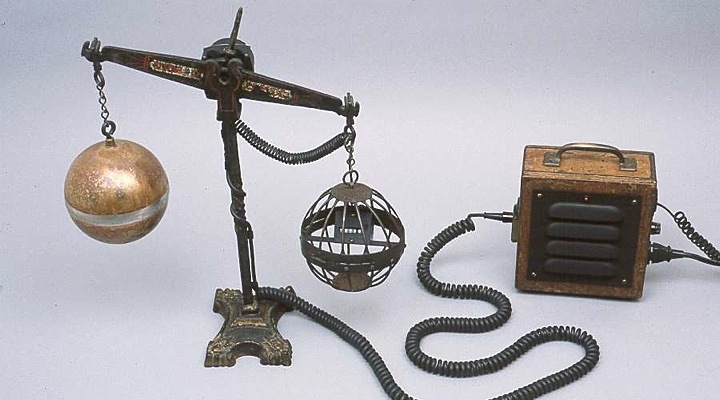
Virtual Self Portraits are abstract, real-time models of their owner; remote, dynamic portraits. The systems are composed of two elements linked by telephone. One element, the control element, remains in the owner’s home. The second element, similar to that pictured here, is the actual dynamic portrait. This is placed wherever the owner wishes. It can be across the room, across the city or across the country. Each element needs only power and continuous access to a phone line.
The dynamic portrait contains a digital counter and a motorized scale. A small red light beats out the passing seconds using a heartbeat pattern. Each day the machine increments the digital counter. Once a year it tips the scale one degree.
To use the system, the owner enters a private code into their control unit at least once every thirty days. Once a month the portrait element calls the control element and checks to see whether the code has been updated within the past thirty days. If so, the portrait calls back again in another month. If not, it permanently ceases to function. In this way the system forms a dynamic, living, breathing model of its owner.
Art and technology writings (1994-2002)
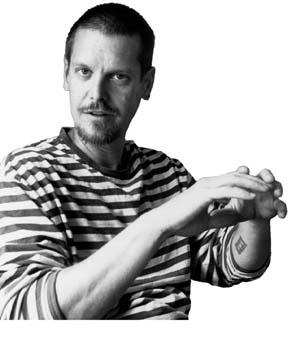
As a working professional artist in the 1990’s, I felt the pressure many of us felt then, to have important things to say; with our work, about our work, and about the world that our work was making important commentary on.
I’ve archived some of those early writings and discussions here. I make relatively few apologies for the self-important yet dilettante nature of some of these blasts from the past; I’m sort of proud of the callow youth I was.
I’ve archived some early writing on this page instead.

